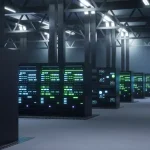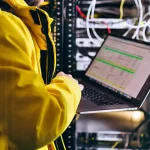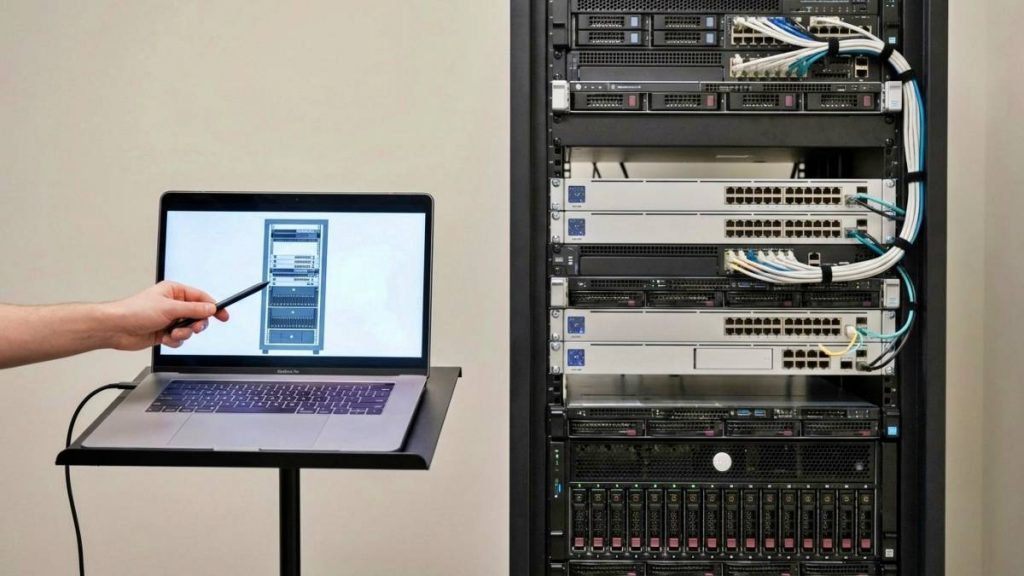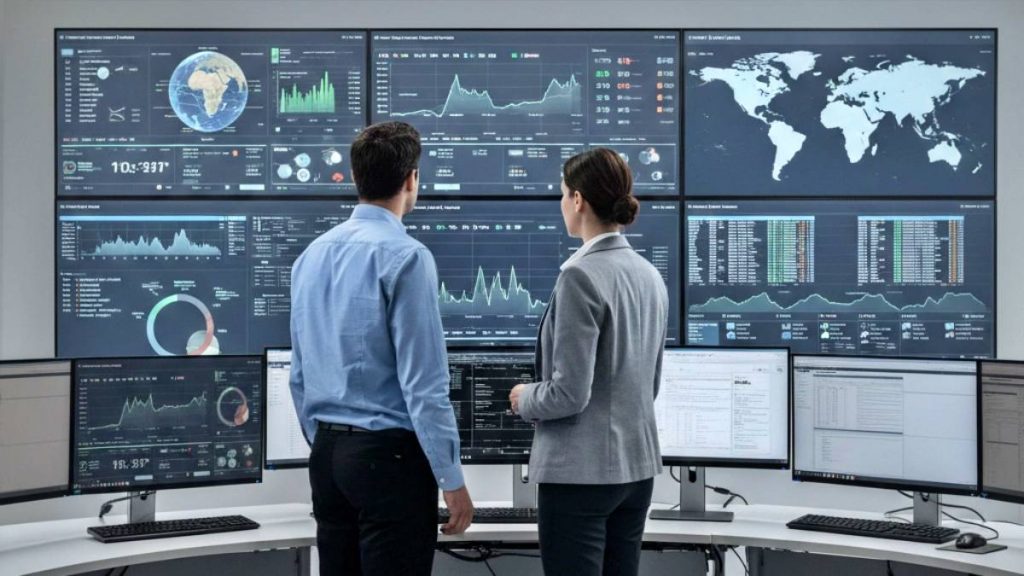Sustainability is more than just a buzzword – it has become a core element of successful business strategy. As consumers and stakeholders increasingly demand environmentally responsible practices, companies must adapt or risk falling behind. Sustainability is no longer optional; it’s essential for long-term viability and brand loyalty.

One powerful avenue for achieving sustainability lies in the realm of data management: green data centers. These innovative facilities significantly minimize carbon footprints while enhancing operational efficiency. By harnessing cutting-edge technologies and renewable energy sources, businesses can transform their IT infrastructure into a model of eco-friendliness. The potential benefits extend beyond environmental impact, including cost savings and improved public perception.
The Environmental Impact of Data Centers
Traditional data centers are significant energy consumers, running 24/7 to support the vast demands of modern businesses. In fact, according to a recent study, data centers accounted for about 2.5% of total electricity consumption in the United States in 2022, and that number is expected to be 6% by 2026. This staggering figure is further compounded by the reliance on fossil fuels for energy production, leading to substantial carbon emissions that contribute directly to global warming. As corporate dependence on cloud computing and big data analytics grows, it’s clear that the environmental cost associated with these operational necessities cannot be ignored.
Moreover, data centers not only exhaust vast amounts of energy but also exacerbate other forms of environmental degradation. The cooling systems required to keep servers operating smoothly can require nearly as much energy as the servers themselves, causing plants near urban areas to utilize additional water resources and emit higher greenhouse gas levels. A report by Lawrence Berkeley National Laboratory demonstrated that large-scale data centers alone could emit an estimated 100 million tons of CO2 annually if left unchecked—enough to rival entire countries in their carbon outputs.
Addressing these challenges is no longer simply a choice; it has become a matter of corporate responsibility and sustainability leadership. Businesses are increasingly being held accountable by consumers and stakeholders alike regarding their environmental impact. By recognizing how traditional data center operations contribute to climate change and degradation, organizations can take proactive steps towards implementing greener alternatives—benefiting the environment and enhancing their reputations in a market that increasingly favors sustainable practices.
Moving towards greener operatives isn’t just about compliance or ethical integrity; it’s also about securing long-term viability in a world that is becoming acutely aware of ecological footprints. Companies like Microsoft and Google have set ambitious goals to reduce waste and achieve carbon negativity across all operations by 2030. These transformative actions align with global sustainability efforts and pave the way for innovation within operational strategies—demonstrating that addressing environmental impacts through green practices can lead to robust business performance and greater ecological stewardship.
Benefits of Green Data Centers
Investing in green data centers presents a remarkable opportunity for businesses to enhance energy efficiency while contributing positively to the environment. Unlike traditional data centers, which often consume excessive amounts of electricity to power servers and maintain optimal operating temperatures, green data centers utilize advanced technologies and sustainable practices to reduce energy consumption significantly. For instance, by implementing server virtualization—a process that allows multiple workloads to run on a single physical server—organizations can optimize their resources, leading to reduced hardware requirements and conservation of energy.
The financial benefits of transitioning to a green data center extend beyond just lower utility bills; they can also include tax incentives provided by governments aiming to encourage sustainable practices. For example, many jurisdictions offer tax credits or rebates for businesses that invest in renewable energy sources or adopt energy-efficient technologies. As organizations witness their operational costs decrease due to improved efficiency, they free up additional capital that can be reinvested into growth initiatives or innovation within their core business strategies.
Furthermore, embracing sustainability through green data centers can drastically enhance an organization’s public image. Today’s consumers are increasingly conscious of environmental issues and prefer companies that demonstrate a commitment to sustainability. By showcasing efforts such as using renewable energy sources or achieving certifications like LEED (Leadership in Energy and Environmental Design), businesses can improve their brand reputation and attract environmentally-minded customers and employees who share similar values. This positive perception fosters customer loyalty and positions the company as a leader in corporate responsibility within its industry.
Ultimately, adopting green data center practices isn’t merely about compliance with regulations or cost savings; it’s an opportunity for organizations to align their operational goals with evolving consumer expectations around sustainability. By taking proactive steps toward greener IT infrastructure, businesses drive a narrative of innovation while making meaningful contributions toward combating climate change—transforming potential liabilities into powerful assets that bolster long-term success.
Key Technologies for Sustainable Data Centers
As businesses increasingly prioritize environmental sustainability, embracing energy-efficient technologies has become essential for transforming traditional data centers into green data centers. Virtualization and server consolidation are two key strategies that organizations can leverage to reduce their energy consumption significantly. By consolidating multiple physical servers into virtual instances running on a single server, businesses can minimize hardware requirements, optimize resource utilization, and dramatically lower power expenditures. For example, companies like VMware have demonstrated that by using virtualization technology, users can achieve up to 80% energy savings while maintaining performance levels.
Another critical area in the quest for energy efficiency involves advanced cooling techniques. Traditional cooling methodologies, such as air conditioning systems, often require substantial amounts of electricity to keep servers operational at optimal temperatures. However, innovative approaches like liquid cooling—where chilled liquids absorb heat from equipment—can drastically cut down on energy use. Companies like Google have pioneered such techniques in their data centers by implementing evaporative cooling systems and efficient airflow management, realizing upwards of 40% reductions in cooling-related energy consumption alone.
Integrating smart grid technology plays a pivotal role in optimizing power distribution within data centers. This approach allows facilities to interact dynamically with the electric grid using real-time data analytics to balance supply and demand efficiently. Smart grids facilitate load shedding during peak demands or high electricity rates and allow the incorporation of renewable sources seamlessly into a facility’s operations. For example, large-scale tech firms have leveraged this integration to automate responses to fluctuations in energy availability while taking advantage of renewable energies often produced when demand is low—leading to economic benefits and an overall reduction in carbon footprints.
By adopting these sophisticated technologies—virtualization, advanced cooling solutions, and smart grid integration—companies position themselves at the forefront of the green movement within the IT industry. The shift towards sustainable operations represents a commitment to environmental stewardship and reflects smart business practices aimed at profitability through innovation and efficiency.
The Use of Renewable Energy Sources
As businesses increasingly turn toward sustainability, integrating renewable energy sources into data centers has become a cornerstone of greener operations. Solar power remains one of the most accessible options, with photovoltaic arrays being installed on rooftops or adjacent land to harness sunlight. Wind energy is another viable alternative, particularly for data centers located in areas with consistent airflow, using turbines to convert wind into electricity. Additionally, hydropower can offer a stable source when facilities are situated near rivers or other flowing water bodies capable of generating hydroelectricity. Each of these renewable technologies plays a vital role in reducing carbon footprints while ensuring long-term energy security.
When considering renewable energy sources, organizations need to choose between onsite generation and offsite procurement. Onsite solutions allow companies to produce their own electricity, greatly reducing reliance on traditional power grids and achieving near self-sufficiency—a decisive advantage for enhancing resilience against market fluctuations in energy costs. In contrast, offsite arrangements such as Power Purchase Agreements (PPAs) enable businesses to buy energy from distant renewable generators at locked-in rates. This option allows firms without adequate space for solar panels or wind turbines to still benefit from green power without direct installation costs.
Companies across various industries have successfully embraced renewable energy solutions with impressive results. For instance, tech giant Google has committed to powering its entire operations worldwide with 100% renewable energy since 2017 and continues to invest heavily in large-scale solar and wind projects across multiple states. Similarly, Microsoft has made bold strides by sourcing over half of its global electricity consumption from renewables—an achievement that aligns not only with its corporate sustainability goals but also enhances its competitive edge in an increasingly eco-conscious market. These case studies demonstrate how leveraging renewable resources can catalyze transformative change within corporate structures.
Transitioning towards renewable energy sources does more than just aid environmental processes; it positions businesses strategically for future challenges while redefining operational efficiency. By fostering innovative partnerships and tapping into diverse forms of clean energy, organizations are not merely participants in the green economy—they are becoming frontrunners working towards a sustainable future that benefits both the planet and their bottom lines.
Implementing Carbon Offset Programs
As businesses increasingly embrace sustainability, carbon offset programs have emerged as critical tools in the fight against climate change. These programs allow companies to compensate for their greenhouse gas emissions by investing in initiatives that reduce or remove an equivalent amount of carbon dioxide from the atmosphere. Particularly for data centers—which can be intensive energy consumers—participating in carbon offset schemes is vital not only for corporate responsibility but also for fulfilling regulatory requirements and bolstering public perception.
To effectively implement a carbon offset program, organizations must first assess and calculate their carbon footprint associated with data center operations. This involves quantifying various factors such as electricity usage, cooling systems efficiency, and waste management practices. By leveraging software tools and consulting services, companies can accurately measure their emissions and identify key areas for improvement. This assessment process is crucial because it provides a baseline from which future reductions can be measured and establishes accountability within the organization’s sustainability strategy.
Several leading corporations are already paving the way with innovative carbon offset initiatives. For instance, tech giant Microsoft has committed to becoming carbon negative by 2030, aiming to remove more carbon than it emits across its global footprint—including data center operations. One of their strategies involves investing in reforestation projects that sequester significant amounts of CO2 while creating biodiversity benefits. Likewise, Google has pledged to operate on renewable energy completely; they also invest in environmental projects that concentrate on reducing emissions equivalent to those produced by their data centers.
The successful implementation of carbon offset programs helps mitigate the environmental impacts tied to traditional business practices and signals a commitment to long-term ecological stewardship. As sustainable business models gain traction globally, organizations prioritizing these initiatives will undoubtedly influence an industry-wide shift towards greener technology infrastructure while simultaneously enhancing their reputation among consumers increasingly focused on corporate sustainability efforts.
Selecting a Green Data Center Provider
Choosing the right green data center provider is crucial for organizations committed to sustainability. Certifications such as LEED (Leadership in Energy and Environmental Design) or ENERGY STAR ratings, which indicate a commitment to energy efficiency and sustainable practices, should be considered when evaluating potential providers. Additionally, it’s essential to examine their sustainability initiatives beyond certifications. For instance, does the provider utilize renewable energy sources? Are they involved in community sustainability programs? These aspects reveal their operational methods and their overall ethos regarding environmental responsibility.
In the selection process, asking pointed questions can help clarify whether a provider aligns with your organization’s sustainability goals. Inquire about their energy management systems and how they monitor and minimize energy consumption. Questions like “What percentage of your operations are powered by renewable energy?” or “How do you handle e-waste and other byproducts of data center operations?” will yield insights into their operational frameworks. Furthermore, understanding how often they upgrade hardware can impact your carbon footprint; frequent upgrades may suggest an inefficient lifecycle management practice that could undermine your commitment to minimizing waste.
Collaboration plays a pivotal role in effective sustainability efforts between businesses and green data center providers. Establishing strong partnerships creates avenues for continuous improvement on both ends, allowing for joint ventures aimed at further reducing carbon footprints while enhancing technology usage. For example, some companies have co-developed innovative cooling technologies with their partners that lead not just to reduced emissions but also to cost savings. This collaborative approach fosters a sense of shared responsibility toward environmental stewardship, enabling organizations to achieve ambitious corporate sustainability targets more effectively.
As businesses increasingly prioritize environmentally friendly practices, selecting a green data center provider is no longer just another decision—it’s a strategic imperative that can significantly influence both operational performance and corporate image in the eyes of customers and stakeholders alike. By carefully assessing potential partners based on established criteria and fostering productive dialogue around mutual objectives, businesses can make meaningful strides toward achieving their sustainability aspirations while driving transformational change within the tech industry.
Real-world Examples: Companies Leading the Way
As businesses worldwide strive to lower their carbon footprints, several organizations have emerged as pioneers in adopting green data center practices. Google stands out with its commitment to sustainability, powering its data centers with renewable energy sources such as wind and solar. By 2020, Google announced that it had achieved a significant milestone by matching its energy consumption with renewable energy purchases on an annual basis. This commitment bolsters its corporate responsibility efforts and sets a benchmark for other tech giants to follow.
Another notable example is Microsoft, which has made substantial strides toward achieving net-zero emissions by 2030. Its innovative approach includes groundbreaking technologies like Project Natick—an underwater data center experiment designed to harness natural cooling resources while minimizing environmental impact. Microsoft’s journey reveals that overcoming initial skepticism about green initiatives can be achieved through thorough research and collaboration with scientists, engineers, and environmental experts. Their experience highlights that sustainability may include challenges; however, transparent communication and heightened awareness are essential for success.
Moreover, Facebook has taken steps toward integrating sustainable design in its data centers by employing advanced cooling techniques and utilizing AI-driven analytics for optimization. Such innovations enhance energy efficiency while significantly reducing operational costs. The lesson from these industry leaders illustrates that investing in research and development pays off—not just in cost savings but also in fostering a culture of environmental stewardship within their organizations.
Looking ahead, trends indicate a growing focus on “circular economy” principles where data centers are designed for efficiency and sustainability throughout their life cycle. As more companies recognize the interconnectedness of technology and ecological health, we may see increased collaboration between various sectors to further innovate green IT infrastructure solutions. This shift represents an opportunity for technological advancements and serves as a call to action for all business leaders aiming for long-lasting success in today’s environmentally conscious marketplace.
Embrace Sustainability for a Brighter Future
Transforming your business model through sustainable practices is no longer just an option; it’s a necessity. Green data centers offer a viable solution to reduce environmental impact and promote responsible technology use. By investing in these innovative infrastructures, organizations help mitigate climate change and enhance their bottom line through cost savings and improved public perception.
In the long run, embracing green data centers can create significant benefits for both the planet and your company’s success. As you embark on this journey towards sustainability, you position your organization as a leader in corporate responsibility. The choice is clear: adopting green technologies today will shape a healthier environment tomorrow while paving the way for future growth. Now is the time to take action and make a lasting difference.







